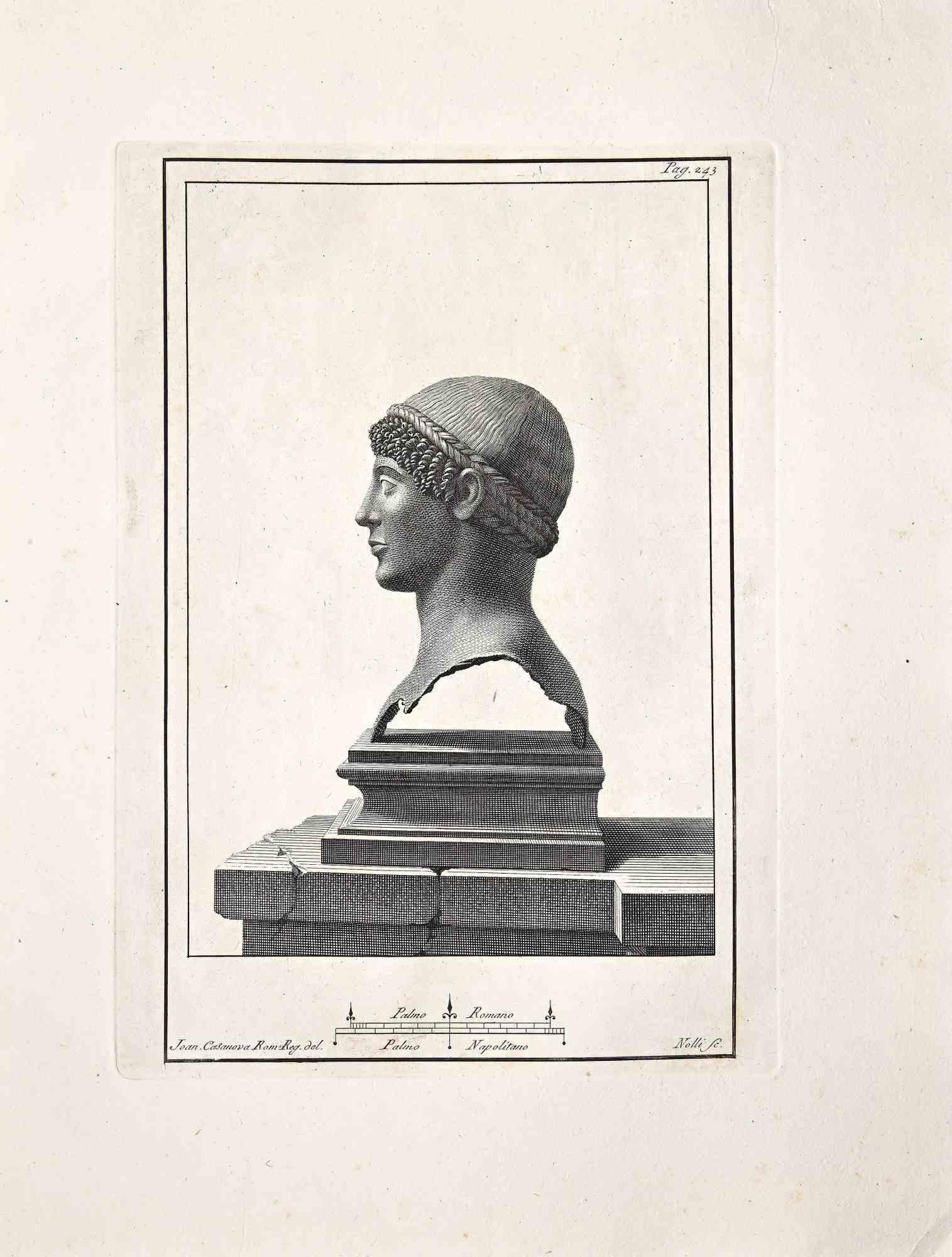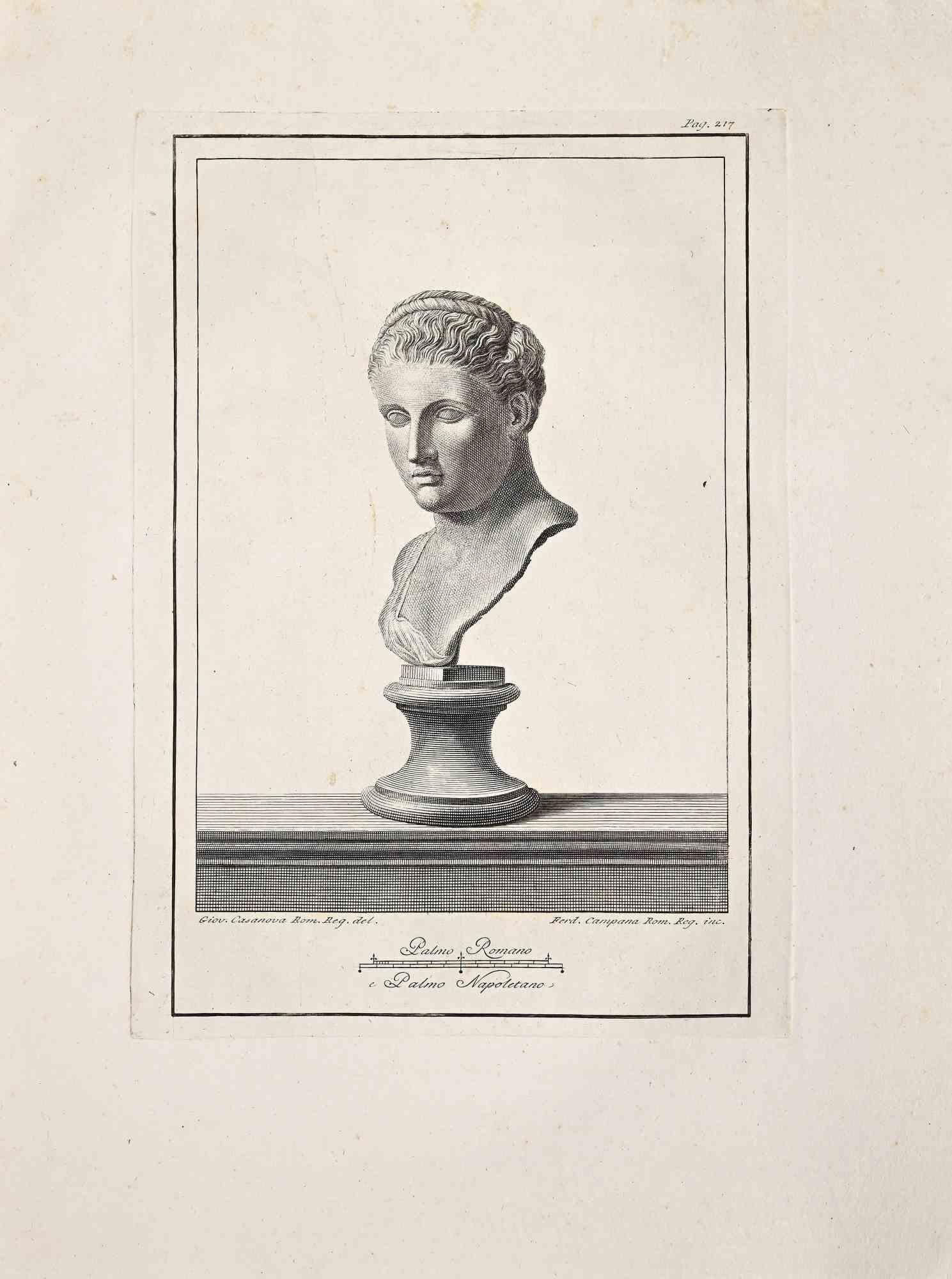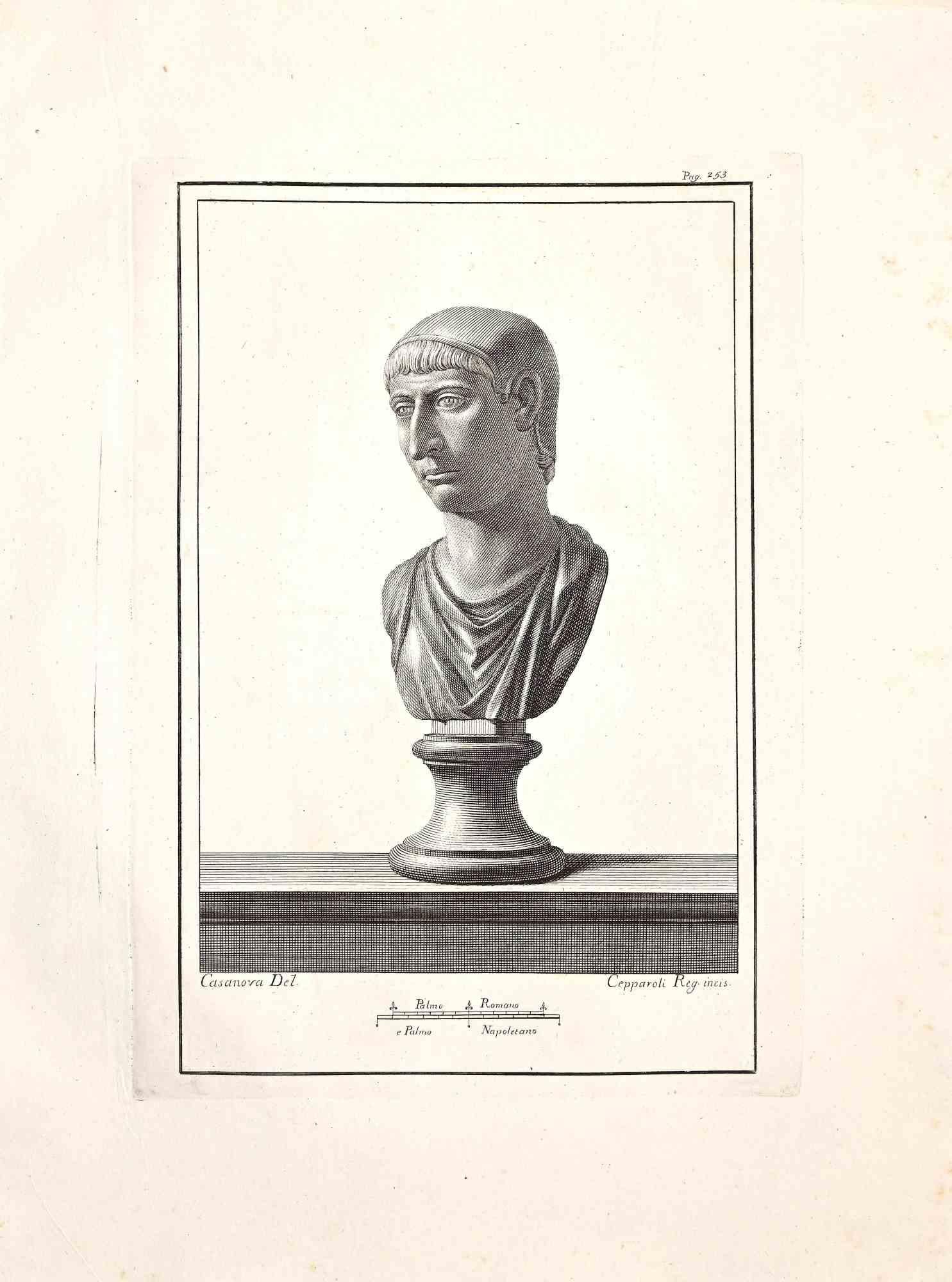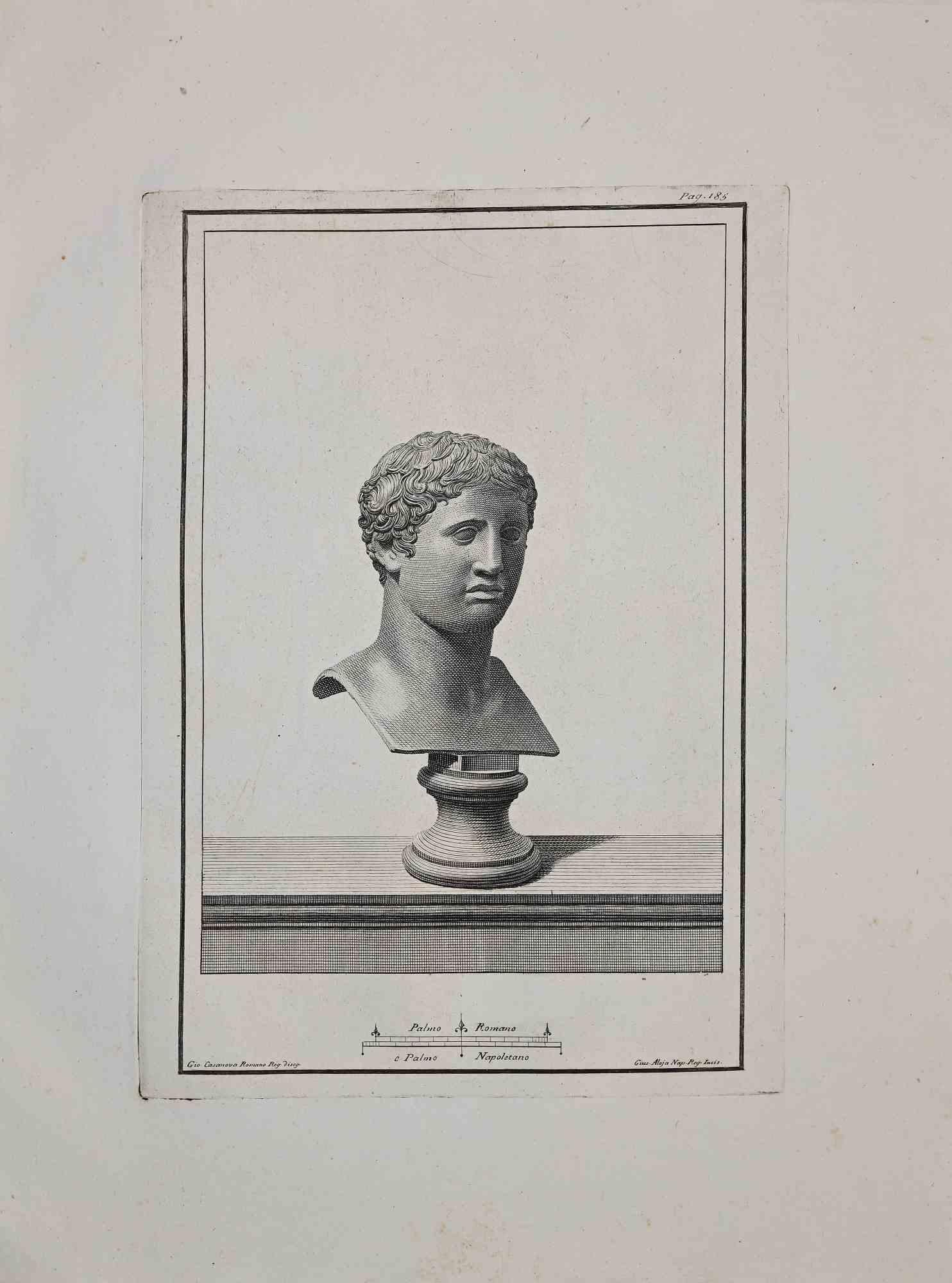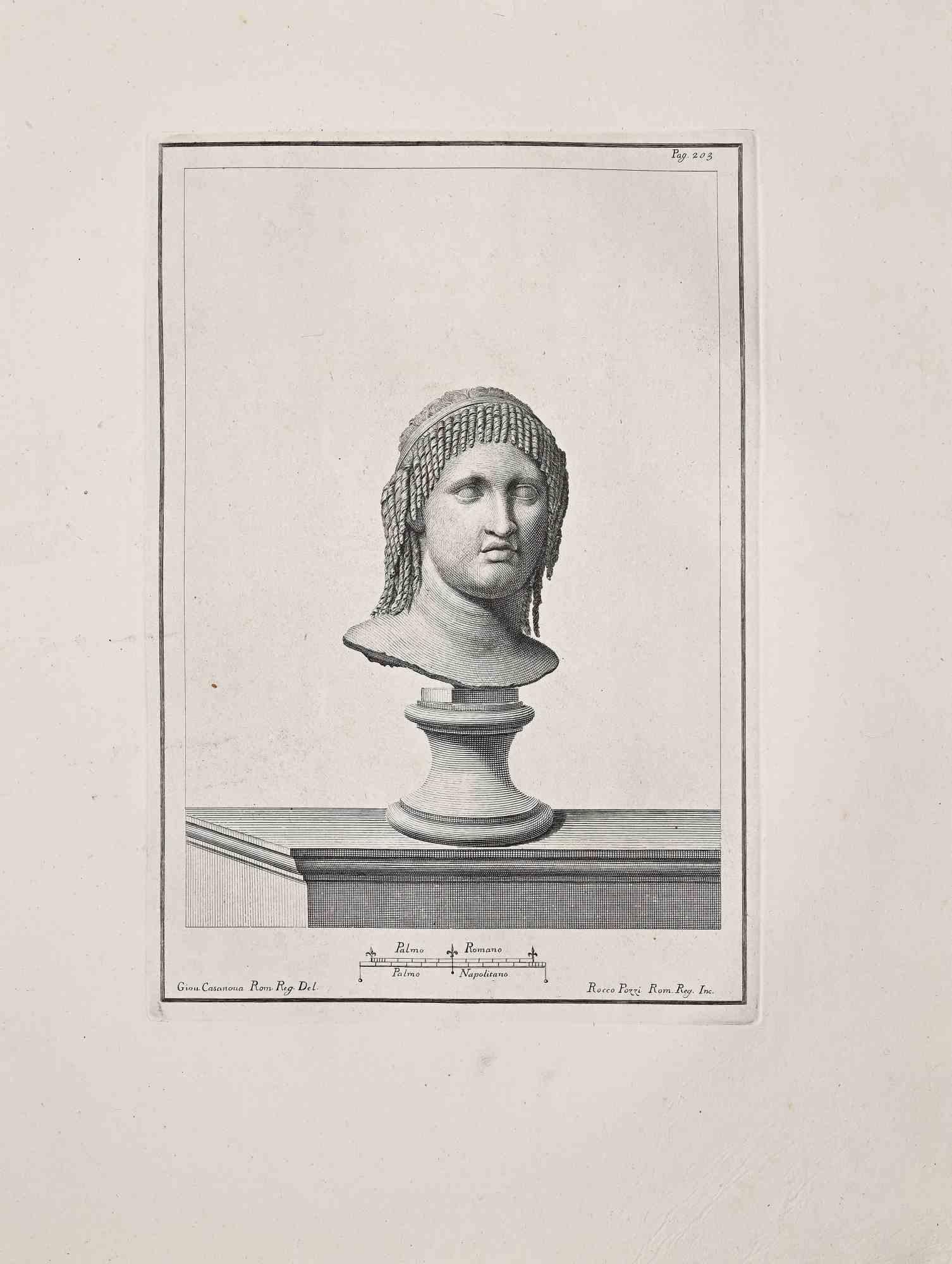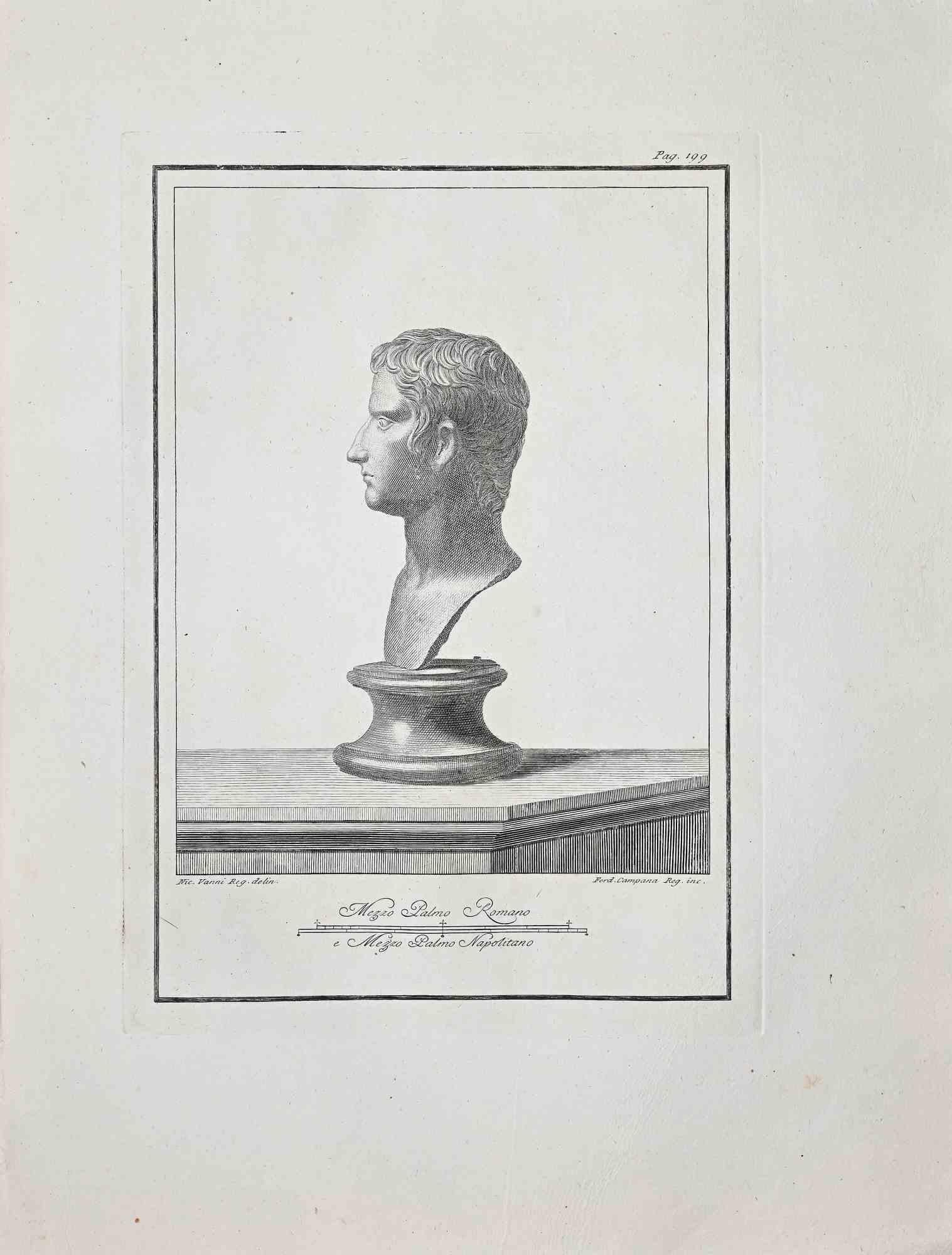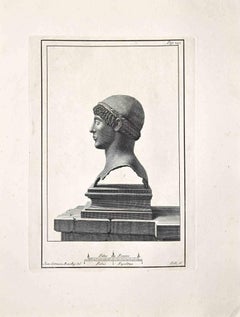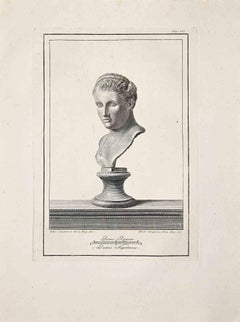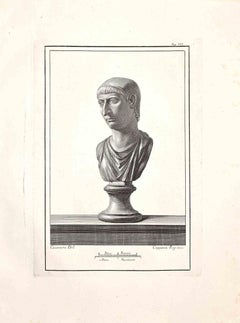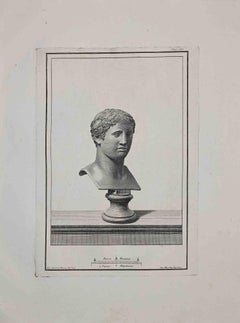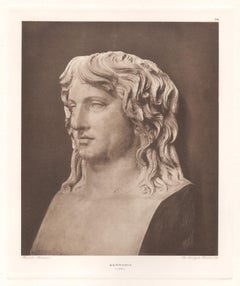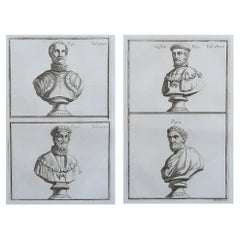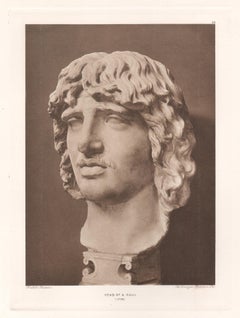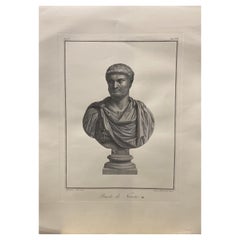Articles similaires à Buste romain ancien - gravure d'origine - 18ème siècle
Vous voulez plus d'images ou de vidéos ?
Demander au vendeur plus d'images ou de vidéos
1 sur 5
UnknownBuste romain ancien - gravure d'origine - 18ème siècleLate 18th Century
Late 18th Century
460 €TVA incluse
À propos de cet article
Ancient Roman Bust, original etching from the end of the 18th century, made by Various Old Masters.
Bon état.
Units of measurements typical of the period in the lower center of the margin: Palmo Romano - Palmo Napolitano. Bottom right and left the name of the artists: Joan.Casanova – Nolli.
The etching belongs to the print-series Antiquities of Herculaneum Exposed (original title: Le Antichità di Ercolano Esposte), eight volumes of engravings of the finds from the excavation of the ruins of Herculaneum in the Kingdom of Naples (today Campania, Italy).
It was published between 1757 and 1792 by the Regia Stamperia and later these copies were delivered to selected recipients throughout Europe.
Despite the title, the Antiquity of Herculaneum shows objects from all the excavations undertaken by the Bourbons in the Gulf of Naples. These include Pompeii, Stabia and two sites of Herculaneum: Resina and Portici.
The Bourbon king Charles commissioned fifteen scholars to create a new “Herculaneum Academy” to study the finds and publish the results of the archaeological excavations of the sites.
The engravings are of high quality and the accompanying text shows a large scholarship.
They were made by 25 leading artists involved by the King to prepare drawings and engravings on the finds, among which we find Giovanni Elia Morghen, Carlo Nolli, Luigi Vanvitelli and Giovanni Battista Casanova.
The "Antiquity" was designed more to amaze readers with the quality of the objects in the collection of the King of Naples than to be used in research, following and increasing the interest of eighteenth-century society for classical culture and art in particular.
Through the exaltation of the classical concept of proportion and harmony, the book inspired the neoclassical movement in Europe, giving artists and decorators access to a vast workshop of Hellenistic motifs.
Ref .:
National Gallery (Washington), Mark J. Millard Architectural, IV (2000), n. 1.
L. Garcia y Garcia, Nova bibliotheca Pompeiana (2 v., 1998).
Royal Institute of British Architects, British Architectural Library ... First Printed Books, 1 (1994), no. 112.
U. Pannuti, Engravers and designers of the Royal Printing House of Naples in the 18th century: the publication of the Antiquities of Herculaneum, in Xenia antiqua, 9 (2000), p. 151-178.
V. Trombetta, The edition of The Antiquities of Herculaneum exhibited in Rendiconti of the Academy of Archeology, Letters and Fine Arts of Naples, 59 (1984), p.151-172.
- Année de création:Late 18th Century
- Dimensions:Hauteur : 50 cm (19,69 po)Largeur : 38 cm (14,97 po)Profondeur : 1 mm (0,04 po)
- Support:
- Mouvement et style:
- Période:
- Encadrement:Options d'encadrement disponibles
- État:Insurance may be requested by customers as additional service, contact us for more information.
- Adresse de la galerie:Roma, IT
- Numéro de référence:Vendeur : T-1262571stDibs : LU65039340002
À propos du vendeur
4,9
Vendeur Platine
Vendeurs premium dont la note est supérieure à 4,7 et le délai de réponse de 24 heures maximum
Vendeur 1stDibs depuis 2017
7 841 ventes sur 1stDibs
Temps de réponse habituel : 1 heure
- ExpéditionRecherche du devis...Expédition depuis : Grasse, France
- Politique des retours
Certaines parties de cette page ont été traduites automatiquement. 1stDibs ne garantit pas l'exactitude des traductions. L'anglais est la langue par défaut de ce site web.
Plus d'articles de ce vendeur
Tout afficherBuste romain ancien - gravure originale - 18ème siècle
Buste romain antique, gravure originale de la fin du XVIIIe siècle, réalisée par différents maîtres anciens.
Bon état.
Unités de mesure typiques de l'époque au centre inférieur de...
Catégorie
Fin du XVIIIe siècle, Maîtres anciens, Estampes - Figuratif
Matériaux
Eau-forte
Buste romain ancien - gravure d'origine XVIIIe siècle
Ancient Roman Bust, original etching from the end of the 18th century, made by Various Old Masters.
Bon état.
Units of measurements typical of the period in the lower center of th...
Catégorie
Fin du XVIIIe siècle, Maîtres anciens, Estampes - Figuratif
Matériaux
Eau-forte
Buste romain ancien - gravure originale - 18ème siècle
Buste romain antique, gravure originale de la fin du XVIIIe siècle, réalisée par différents maîtres anciens.
Bon état.
Unités de mesure typiques de l'époque au centre inférieur de ...
Catégorie
Fin du XVIIIe siècle, Maîtres anciens, Estampes - Figuratif
Matériaux
Eau-forte
Buste romain ancien - gravure d'origine XVIIIe siècle
Buste romain antique, gravure originale de la fin du 18e siècle, réalisée par divers maîtres anciens.
Bon état
Dans cette œuvre d'art est représenté le visage d'un homme dans un s...
Catégorie
Fin du XVIIIe siècle, Moderne, Estampes - Figuratif
Matériaux
Eau-forte
Buste romain ancien - gravure d'origine XVIIIe siècle
Ancient Roman Bust,, original etching from the end of the 18th century, made by Various Old Masters.
Bon état.
Units of measurements typical of the period in the lower center of t...
Catégorie
Fin du XVIIIe siècle, Maîtres anciens, Estampes - Figuratif
Matériaux
Eau-forte
Buste romain ancien - gravure d'origine XVIIIe siècle
Ancient Roman Bust, original etching from the end of the 18th century, made by Various Old Masters.
Bon état.
Units of measurements typical of the period in the lower center of the...
Catégorie
Fin du XVIIIe siècle, Maîtres anciens, Estampes - Figuratif
Matériaux
Eau-forte
Suggestions
Germany, British Museum Roman Classical sculpture photogravure
Germania
Photogravure issue d'une collection de photogravures représentant des marbres et bronzes grecs et romains conservés au British museum. Numéro de plaque au-dessus du coin su...
Catégorie
Années 1910, Autres styles artistiques, Estampes - Portrait
Matériaux
Photogravure
Grandes estampes anciennes originales de bustes de la Renaissance Rome 1776
Magnifiques images de bustes de la Renaissance
Gravures sur cuivre
Publié par Monaldini, Rome, 1776
Papier vélin de bonne qualité
Expédition gratuite
Catégorie
Antiquités, années 1770, italien, Renaissance, Estampes
Matériaux
Plâtre
65 € / ensemble
Livraison gratuite
Tête d'un Gaulois, British Museum Sculpture classique romaine photogravure
Tête de gaulois
Photogravure issue d'une collection de photogravures représentant des marbres et bronzes grecs et romains conservés au British museum. Numéro de plaque au-dessus du ...
Catégorie
Années 1910, Autres styles artistiques, Estampes - Portrait
Matériaux
Photogravure
Buste d'empereur romain contemporain "Nerone" imprimé à la main en Italie antique
Belle reproduction de la plus célèbre illustration réalisée par Pietro Fontana ("Pietro Fontana incise Roma") représentant le buste de l'empereur romain Septime Sévère.
Ce tirage ex...
Catégorie
XXIe siècle et contemporain, italien, Néoclassique, Estampes
Matériaux
Papier
Tête de Déméter de Cnide British Museum Sculpture classique romaine photogravure
Tête de Déméter de Cnide
Photogravure issue d'une collection de photogravures représentant des marbres et bronzes grecs et romains conservés au British museum. Numéro de plaque au-d...
Catégorie
Années 1910, Autres styles artistiques, Estampes - Portrait
Matériaux
Photogravure
Buste d'empereur romain contemporain italien imprimé à la main " Settimio Severo"
Belle reproduction de la plus célèbre illustration de Giovanni Battista Leonetti ("Giov Batta Leonetti incise Roma") représentant le buste de l'empereur romain Septime Sévère.
Ce ti...
Catégorie
XXIe siècle et contemporain, italien, Néoclassique, Estampes
Matériaux
Papier
